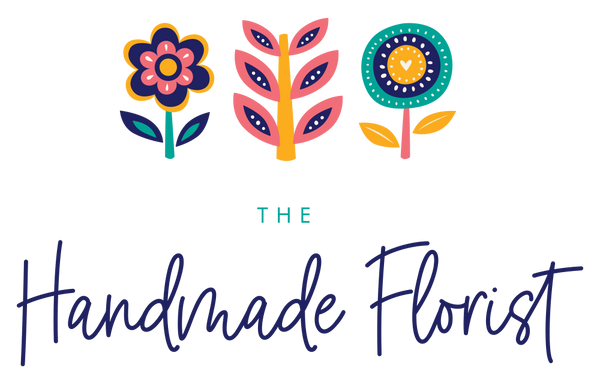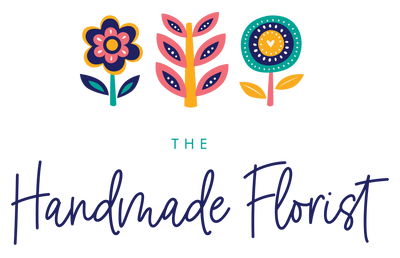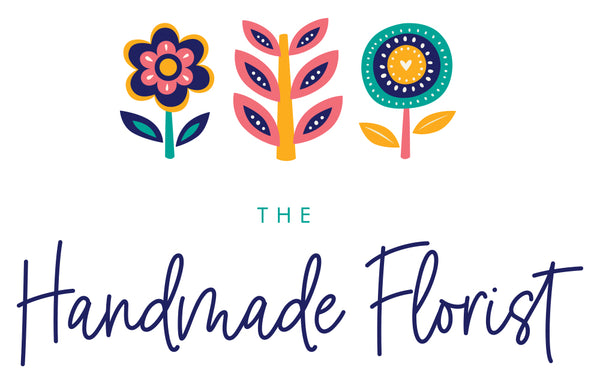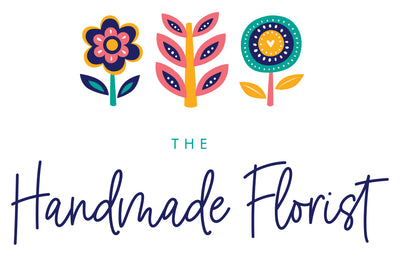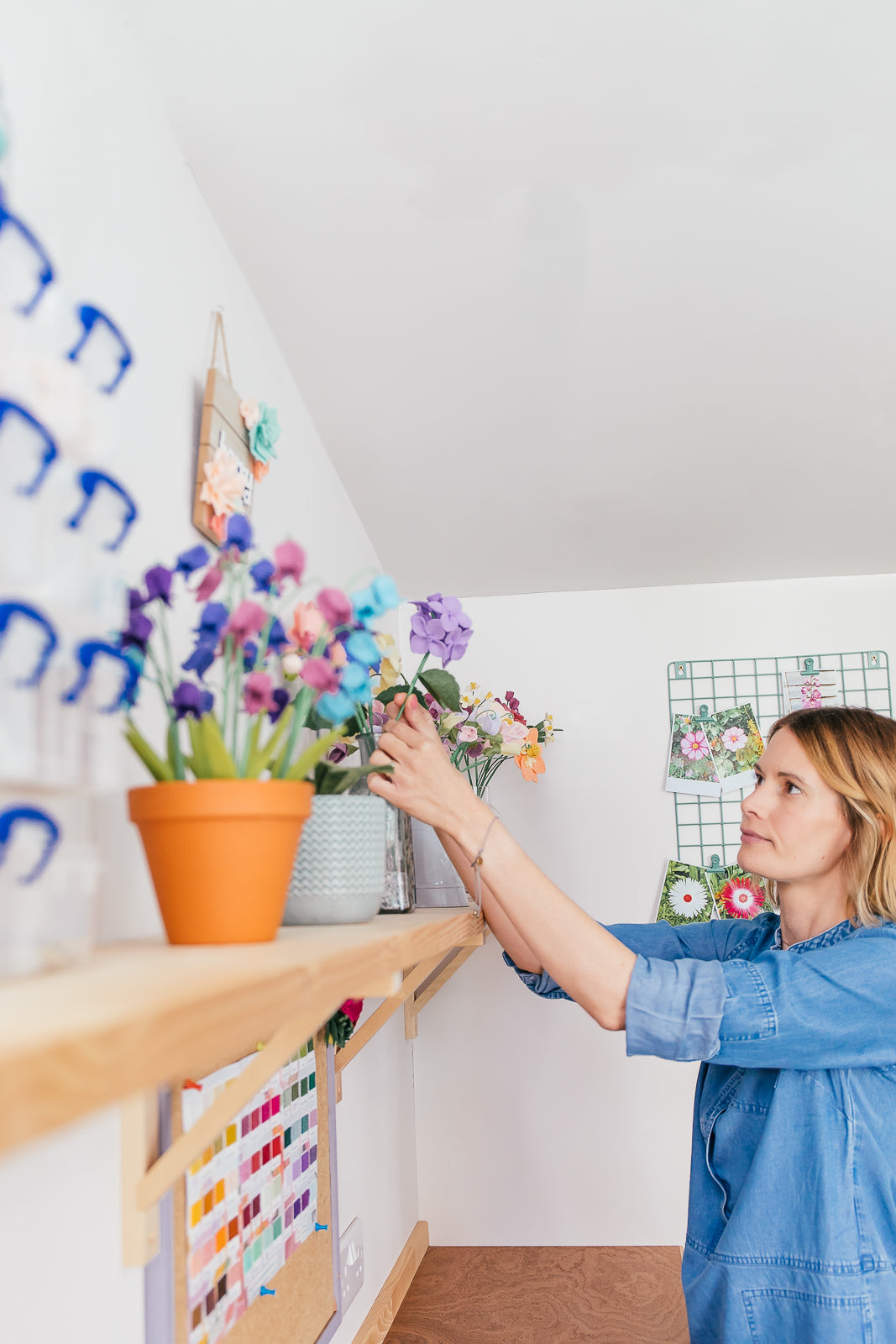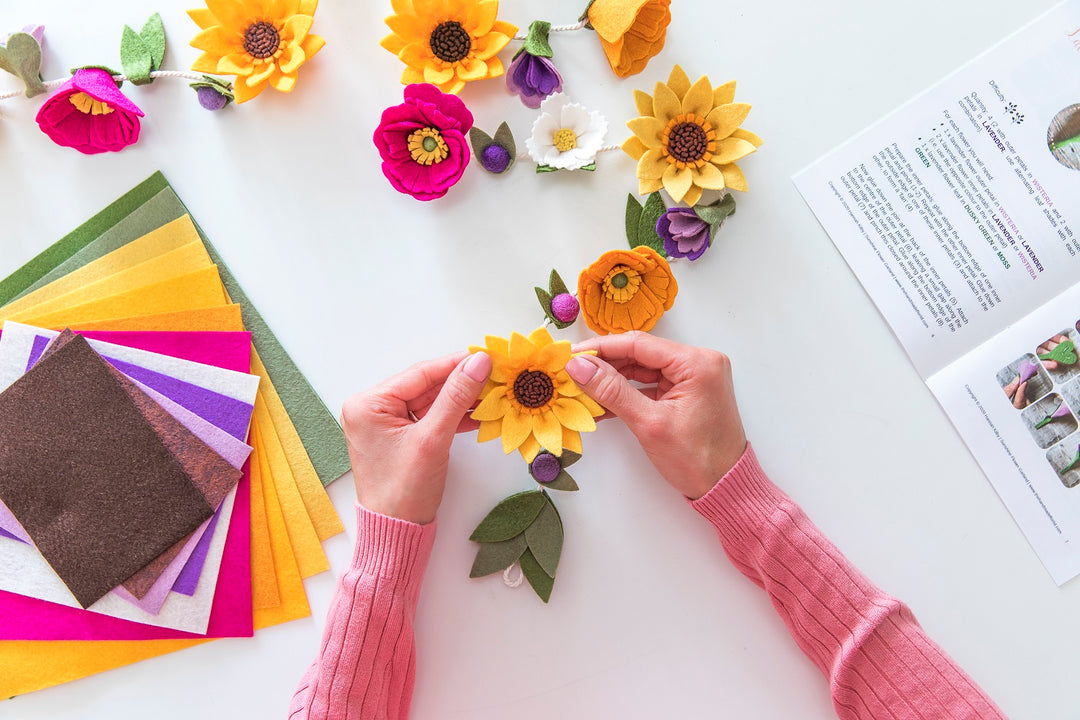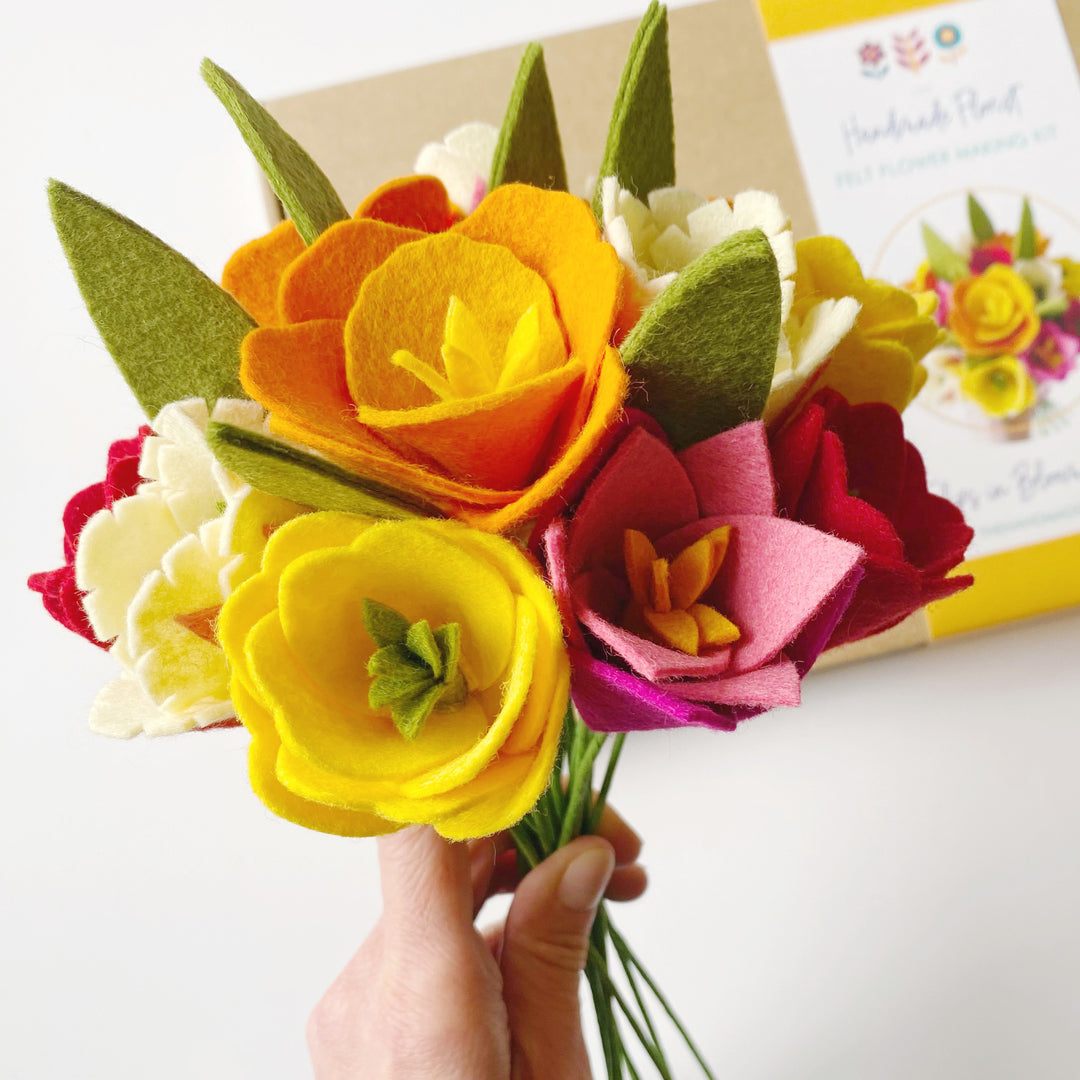A guide to choosing felt for making felt flowers

When I began making felt flowers (many moons ago!), it was with some leftover felt from a local craft shop and my kitchen scissors! Since then, I’ve probably made more flowers than I could count and, along the way, I’ve experimented with lots of different types of felt for flower making.
With lots of different types of felt available, you may be wondering what is right for felt flowers e.g. wool felt vs. synthetic felt. Here’s my quick guide to what’s available and my tips on choosing felt for your handmade flowers.
What is felt (and why I love it!)?
Felt is a versatile fabric made by compressing and interlocking fibres. The fibre type significantly impacts its characteristics. But the thing I LOVE about all types of felt is that, unlike many fabrics, you don’t have to worry about fraying. You can cut cleanly and neatly and get on with creating beautiful blooms and other felt crafts.
Here are the main felts you'll encounter:
- 100% wool felt: Made from 100% wool, this felt is soft and naturally beautiful, offering fantastic durability and a wide range of colours. Because it is 100% wool, you’ll probably find it’s more expensive than other types on the market. You’ll find it in a range of thicknesses, but I recommend 1mm thick felt for felt flower making.
- Wool-blend felt: This budget-friendly alternative to 100% wool felt combines wool with other fibres like rayon. The felt retains some of the wool’s softness and work-ability, making it ideal for felt flower making. This is my preferred felt for flower making! Again, I recommend a 1mm thickness of felt for flower making.
- Craft felt: Typically made from acrylic or polyester fibres, craft felt is usually the most economical choice. It comes in a vast array of vibrant colours and varying thicknesses. However, it can be stiffer and have a ‘scratchier’ feel than other felts.
Wool-blend felt: why it’s my choice
Having used all the types of felt above, the felt I choose to work with is wool-blend felt. You’ll find it in all my craft kits for DIY flowers and in my flower making supplies shop. I LOVE it! For me, wool-blend felt offers affordability whilst retaining the quality needed for long-lasting felt flowers and beautiful floral arrangements - making it (in my opinion!) the best felt for flowers.
You’ll find more than 70 colours of wool-blend felt in my shop, ranging from bold and bright hues to delicate pastels. Wool content varies by colour, with mixes of 20% wool/80% rayon and 35% wool/65% rayon. Not sure which colour to choose? Why not order one of my handy felt colour charts.
Tips on working with your felt:
- Invest in a good pair of fabric scissors, which you keep just for your felt! The scissors I use are docrafts Xcut Stainless Steel Pro Craft Scissors.
- Wondering what is the best glue for felt flowers? Read my blog post on the three essential tools for felt flower making.
- Wash your hands when using glue and florist tape. If you’ve got any tackiness on your fingers from using other products like florist tape, give them a quick wash with warm soapy water before handling your felt. This will help to prevent your felt catching or going fluffy as you work with it.
- Get creative with your colour palettes. You can find my tips for choosing the perfect colour palette for your next felt flower project in this blog post.
- Mix and match with felt balls: As well as stocking a huge range of felt colours in my shop, I also sell 100% wool felt balls to match most colours. Any my handy Felt Ball Colour Guide will help you find the right felt balls to match your chosen felt colours.
With a little knowledge about felt varieties and these handy tips, you're well on your way to discovering the wonderful world of floral crafting with felt! Remember, there's no single “perfect” felt – experiment and have fun. So, grab your felt, unleash your creativity, and let your felt flowers bloom!
